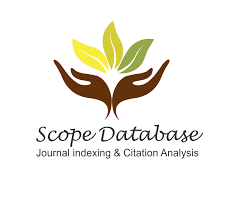Details
A Review Study on The Effect of Fungi and Aflatoxin on Stem Cells
Iman Hadi Alfayyadh
Lect. Pathological Analysis Dept. College of Science, University of Thi-Qar, Iraq
Ihsan Hameed Khudhair
Asst. Lect. Biology Dept. College of Science, University of Thi-Qar, Iraq
Download PDF http://doi.org/10.37648/ijrst.v11i01.001
http://doi.org/10.37648/ijrst.v11i01.001
Abstract
Infection with pathogenic fungi, such as invasive Aspergillosis, remains a major infectious disease. Causes of death after transplantation of hematopoietic stem cells (HSCT), although a new antibody to bacteria has been present in recent years. The increase in deaths due to infection with fungi such as Aspergillus is mainly due to the difficulty of diagnosing invasive fungi in the early stages of development because laboratory tests require a combination of multiple procedures, low-quality tests and other surgical procedures in the case of detection of fungi. This study sheds light on Research that has dealt with focusing on the relationship between fungi and the toxins they produce, such as aflatoxin toxins, and the deaths that occur after stem cell transplantation in many patients who need this type of treatment. Shedding light on these studies can take a positive turn to saving the lives of many patients by discovering the reasons behind the occurrence of deaths after a stem cell transplant. It was found through the studies covered in this report that most of the antibodies in the blood of patients were Positive ring against fungi that were present in-patient samples such as sputum, blood, diuresis and other samples in addition to false positive rings, as well as negative rings, but at lower rates.
Keywords: Fungi; Aflatoxin; stem cell; Aspergillus
References
- Cornely OA, Maertens J, Winston DJ et al. Posaconazole vs.- fluconazole or itraconazole prophylaxis in patients with neutropenia NJM 2007; 356: 348–359.
- Neofytos D, Horn D, Anaissie E et al. Epidemiology and outcome of invasive fungal infection in adult hematopoietic stem cell transplant recipients: analysis of Multicenter Prospective Antifungal Therapy (PATH) Alliance registry. Clin Inf Dis 2009; 48: 265–273.
- Mirkov I, Stosic-Grujicic S, Kataranovski M. Host immune defence against Aspergillus fumigatus: insight from experimental systemic (disseminated) infection. Imm Res 2012; 52: 120–126.
- Baddley JW. Clinical risk factors for invasive aspergillosis. Med Myco 2011; 49 (Suppl 1): S7–S12.
- Li L, Wang J, Zhang W, Yang J, Chen L, Lv S. Risk factors-for invasive mild infections following allogeneic hematopoietic stem cell transplantation: a single centre study of 190 recipients
- Scand J Inf Dis 2012; 44: 100–107. 6-Marr KA, Carter RA, Boeckh M, Martin P, Corey L. Invasive aspergillosis in allogeneic stem cell transplant recipients: changes in epidemiology and risk factors. Blood 2002; 100: 4358–4366.
- Schwartz RS, Mackintosh FR, Schrier SL, Greenberg PL. Multivariate analysis of factors associated with invasive fungal disease during remission induction therapy for acute myelogenous leukaemia. Cancer 1984; 53: 411–419.
- Kullberg BJOLA, Janssen J,Meis J, Natsch S, Verweij PE. SWAB Guidelines for the Management of Invasive Fungal Infections. 2009, www.swab.nl/guidelines, accessed November 2013.
- Freifeld AG, Bow EJ, Sepkowitz KA et al. Clinical practice guideline for the use of antimicrobial agents in neutropenic patients with cancer: 2010 update by the Infectious Diseases Society of America. Clin Inf Dis 2011; 52: 427–431.
- Maertens J, Marchetti O, Herbrecht R et al. European guidelines for antifungal management in leukaemia and hematopoietic stem cell transplant recipients: summary of the ECIL 3—2009 update. Bone Marrow Transplant 2011; 46: 709–718.
- Camps SM, Rijs AJ, Klaassen CH et al. Molecular epidemiology of Aspergillus fumigatus isolates harboring the TR34/L98H azole resistance mechanism. J Clin Microbiol 2012; 50: 2674–2680.
- Chen, X. I.; Shoudong, Y.E. and Qi-Long.Y. Stem cell maintenance by manipulating signaling pathways : past , current and future. British Medical Bulletin, 2015, 48(12), pp.668–676.
- Liang, R. and Ghaffari, S. Stem Cells, Redox Signaling, and Stem Cell Aging. Antioxidants & Redox Signaling, 2014,20(12), 1902–1916.
- Li, J.; Song, W.; Pan, G. and Zhou, J. Advances in understanding the cell types and approaches used for generating induced pluripotent stem cells. Haematology and Oncology ,2014,50(7); pp.1–18.
- Ahmed, A.U.; Auffinger, B. and Lesniak, M. Understanding glioma stem cells: rationale, clinical relevance and therapeutic strategies. Expert Rev Neurother 2015,13 (5), pp. 545–555.
- Upadhyay, R.K. Role of regeneration in tissue repairing and therapies. Regenerative Medicine & Tissue Engineering,2015, 4, pp.1–30.
- Jun, S. and Irving, L.W. Hematopoietic Stem Cell: Self-renewal versus Differentiation. Wiley Interdiscip Rev Syst Biol Med; 2011,6(2); pp.1–20.
- Chen, X. I.; Shoudong, Y.E. and Qi-Long.Y. Stem cell maintenance by manipulating signaling pathways : past , current and future. British Medical Bulletin, 2015,48(12), pp.668–676.
- Riether, C. C.M; Schu, R. and Ochsenbein A.F. Regulation of hematopoietic and leukemic stem cells by the immune system. Cell Death and Differentiation, 2015,22(4); pp.187–198.
- Brown, R.L.; Chen, Z. and Menkir, A. Aflatoxins- recent advances and future ,2013, Pp 315-340 .
- Yuki Asano-Mori, Yoshinobu Kanda, Kumi Oshima, Shinichi Kako, Akihito Shinohara, Hideki Nakasone, Makoto Kaneko, Hiroyuki Sato, Takuro Watanabe1, Noriko Hosoya, Koji Izutsu, Takashi Asai, Akira Hangaishi, Toru Motokura, Shigeru Chiba and Mineo Kurokawa.2008. False-positive Aspergillus galactomannan antigenemia after haematopoietic stem cell transplantation. Journal of Antimicrobial Chemotherapy, 2008, 61, 411–416, doi:10.1093/jac/dkm463.
- Robert J. van de Peppel, Olaf M. Dekkers, Peter A. von dem Borne and Mark G. J. de Boer.2014. Relapsed and secondary disease drive the risk profile for invasive aspergillosis prior to stem cell transplantation in patients with acute myeloid leukaemia or myelodysplastic syndrome Medical Mycology, 2014, 52, 699–705 Doi: 10.1093/mmy/myu036 Advance Access Publication Date: 21 July 2014 Original Article.
- Mushtak T.S. Al-Ouqaili, Mohammed H.Musleh, and Salah M. A. Al-Kubaisi. Depending on HPLC and PCR, detection of aflatoxin B1 extracted from Aspergillus flavus strains and it's cytotoxic effect on AFB1 treated-hematopoietic stem cells obtained from human umbilical cord. November 2018 Asian Journal of Pharmaceutics 12(3):1048 DOI: 10.22377/ajp.v12i03.2650.











